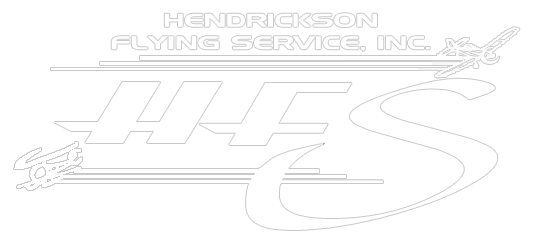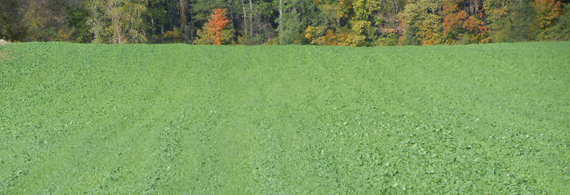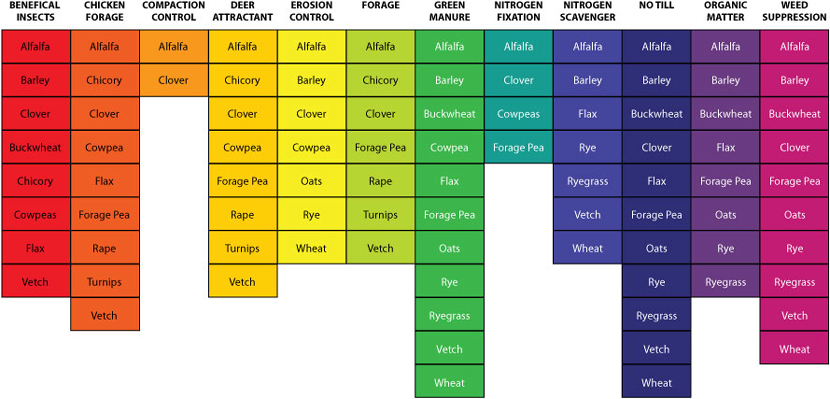THE ROLE OF COVER CROPS
Producers who want to prevent soil erosion, improve nutrient cycling, sustain their soils, and protect the environment have been returning to a very old practice: planting cover crops.
Although farmers have been using cover crops for centuries, today’s producers are part of a generation that has little experience with them. As they rediscover the role that cover crops can play in sustainable farming systems, many growers find they lack the experience and information necessary to take advantage of all the potential benefits cover crops can offer.
Hendrickson Flying Service has extensive aerial seeding experience and is a licensed retailer for cover crop seed as well. Call or email us today to discuss cover crop further, as well as seed application timing, pricing and what cover crop species or seed blends might be appropriate to meet your objectives.
BENEFITS OF COVER CROPS
IMPORTANT NITROGEN SOURCE
Only legume cover crops fix atmospheric nitrogen into forms that are available to plants. After you terminate the cover crop, much of this nitrogen will eventually become available for succeeding cash crops. Roughly speaking, about half the nitrogen in the legume cover crop shoots should be available for the following crop one or two months after terminating the cover crop.
IMPORTANT NITROGEN SCAVENGER
The growing roots of all cover crops take up residual soil nitrate from fertilizer and soil organic matter mineralization. This reduces the amount of nitrate that leaches out of the soil and in turn, protects water quality. Furthermore, some of the scavenged nitrogen will be available to succeeding cash crops while the rest will help build soil organic matter.
SOIL BUILDER, SUBSOILER, TOPSOIL LOOSENER
Broadly speaking, cover crops can improve soil quality. They help build soil organic mater and sequester carbon by adding their roots and shoots to the soil. Fibrous roots enmesh soil particles and provide food for microorganisms, which in turn produce polysaccharides and other “sticky” substances that stabilize soil aggregates. Deep roots improve soil permeability, which leads to increased water infiltration and aeration. Taproots may also penetrate compacted soil layers over time, which provides macropores for future root growth. In areas where compacted soils are a problem for cash crops, cover crops may be able to reduce the problem. Cover crops also provide additional food for soil fauna such as earthworms. In years with prevented planting, cover crops can help rebuild soil productivity that may have been lost by prolonged ponding, flooding, and erosion.
EROSION PREVENTER
The classic use of cover crops is to cover the soil to protect against both water and wind erosion, as the live roots help hold the soil in place against such elements. They also have an ability to produce residue that persists in the soil.
WEED FIGHTER
Some cover crops are noted for their ability to suppress weeds by virtue of competition, shading, or allelopathy. Allelopathy occurs when one plant produces organic compounds that have negative impacts on other plants.
GRAZING AND FORAGE
Cover crops can provide livestock producers with extra grazing or haying opportunities.
CHOOSING YOUR COVER CROP
To get the maximum benefit from cover crops, they need to become an integral part of your cropping system for several growing seasons. Whether you grow just corn and soybeans, or you have a more diverse rotation that includes wheat or horticultural crops or livestock and manure, there are opportunities to include cover crops in your production system.
To choose the most appropriate cover crop for your cropping system, consider the following questions:
WHAT ARE MY OBJECTIVES?
Different cover crop species provide different benefits. Choose those that best match your needs. We can discuss options with you, or The Midwest Cover Crops Field Guide is an excellent source that outlines various species and their relative benefits in great detail.
WHAT IS MY CROPPING AND TILLAGE SYSTEM?
Implementing Cover Crop into your system successfully is also dependent on timing. Consider how much time you can allow the cover crop to grow within your current system, and if that’s sufficient to reap that particular species benefits. Specifically, how much time do you have after you harvest your cash crop before you plant the next one? Or, how much growing season is left? A key benefit of aerial application of cover crop is that by seeding into cash crop before harvest, it can allow the cover crop to adequately establish itself and its resulting benefits to be fully taken advantage of, while not disrupting the timing of your production system.
WHERE AM I LOCATED?
Climate, soils, and other growing conditions affect cover crops just like any other crop. Some cover crops that work well in the central part of the Corn Belt may not work consistently in the more northern areas of the Corn Belt.
WHAT ARE THE TYPES AND NATURAL DRAINAGE CHARACTERISTICS OF MY SOIL?
Some cover crops tolerate wet or droughty conditions while others will not. Is there artificial (tile or ditch) drainage in your field? Consider this when choosing a cover crop.




